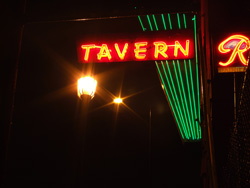- What is TZD?
- TZD Initiatives in MN
- Events
- News
- Resources
- Aggressive Driving
- Bicycling & Pedestrian Safety
- Child Passenger Safety
- Distracted Driving
- Education
- Emergency Medical & Trauma Services
- Enforcement
- Engineering
- Impaired Driving
- Intersection Safety
- Lane Departure
- Older Drivers
- Rail Crossing Safety
- Seat Belt Use
- Statistics
- Traffic Safety Legislation
- Videos
- Younger Drivers
Minnesota Safe Ride Programs
Introduction

Humans are social animals. People gather in small and large groups to share stories and celebrate. Food and drink, including alcohol, are often part of these gatherings and travel is often required to get together with friends, family, and acquaintances, and so transportation, by personal vehicle or public transportation, is often necessary for people to enjoy one another’s company.
Alcohol consumption is common in society, be it in private residences, bars, restaurants, or other locations. When consumed in moderation, alcohol generally does not harm those legally able to use it. Problems arise, however, when individuals consume too much alcohol and drive afterward.
In 2008, 11,773 people were killed in crashes resulting from alcohol-impaired driving. These fatalities accounted for 32 percent of the total motor vehicle traffic fatalities in the United States. Of those 11,773 who died in alcohol-related crashes, 9,902 (84 percent) were drivers with a blood alcohol concentration (BAC) of 0.08 or higher or passengers in these vehicles. People are literally “dying to get home.”
Background

Communities have long struggled with the negative impacts of impaired driving. From needless death and injury to overloaded criminal justice systems, alcohol-related crashes and DWI arrests take an emotional and economic toll on society. Some communities have responded by developing transportation alternatives to give drivers another way home after an evening out drinking. Safe ride programs are one approach to preventing impaired driving. With names such as “Dial-a-Ride,” “Sober Cab,” “Safe Ride,” “Tipsy Taxi,” and “Road Crew,” these and other programs throughout the country have a similar objective: to ensure a sober ride home for individuals who have consumed alcohol and would otherwise drive, posing a risk to themselves, their passengers, and others sharing the roadway.
Safe ride programs enjoy broad support from potential users, drinking establishments, community organizations, and the alcohol beverage industry and are believed to help reduce the number of intoxicated drivers on the road. Although some critics are concerned that drinkers will consume more alcohol when they are relieved of the responsibility of driving, research does not bear this out. Instead, research suggests that safe ride programs do not promote or encourage levels of drinking beyond what would otherwise occur, and that safe ride programs actually attract drinkers at high risk for DWI.
The mechanics of safe ride programs encompass a wide variety of transportation alternatives, such as taxicabs, limousines, tow trucks, buses, and automobiles, and have various organizational structures. Safe ride programs operate in urban, rural, and suburban locations and are run by several types of organizations: cab and bus companies, charitable organizations, trade associations, hospitals, government agencies, and nonprofit organizations set up specifically for this purpose. Program availability, frequency of service, costs to users, population served, sponsorships, and modes of operation can differ significantly from program to program. Program variations significantly limit the ability of researchers to generalize about the effectiveness of these efforts. Therefore, broad evidence of the effectiveness of safe ride programs in reducing DWI behavior is largely unknown.
Evaluations of some individual safe ride programs suggest this environmental strategy has promise. The Pitkin County Sheriff’s Office in Aspen, Colorado, has operated Tipsy Taxi since 1983 as a crime prevention program with assistance from the Aspen and Snowmass Police Departments as well as the local restaurant association. Tipsy Taxi is a free ride-home program available 24 hours a day, 365 days a year and is guided by an informal advisory committee made up of several local stakeholders. No tax dollars are used to fund the program. Although crash reductions that approach statistical significance are unlikely due to relatively few crashes in Pitkin County overall, examination of crash data indicated that nighttime, injury, and fatal crashes declined after implementation of Tipsy Taxi.
In a study that examined a different safe ride model—the Road Crew program—three rural communities in Wisconsin implemented a safe ride program that offered drinkers reduced-cost transportation to, from, and between bars in their communities. Extensive market research completed before and after implementation of the Road Crew program shaped the program’s focus and specifics. Overcoming the concern of many drinkers about leaving a vehicle behind at the bar at the end of the night, the Road Crew program charged drinkers a nominal fee for round-trip transportation for the evening, eliminating the need for any driving on the part of the drinker. With almost 20,000 rides provided during the test year, a cost-benefit analysis of the number of potential crashes avoided estimated a 17 percent decrease in crashes after the first year of the program.
Since drinking practices are relatively immune to change, safe ride programs can potentially remove many alcohol-impaired drivers from area roadways. As a result, drinking drivers, their passengers, and innocent motorists sharing the road are more likely to get home safely.